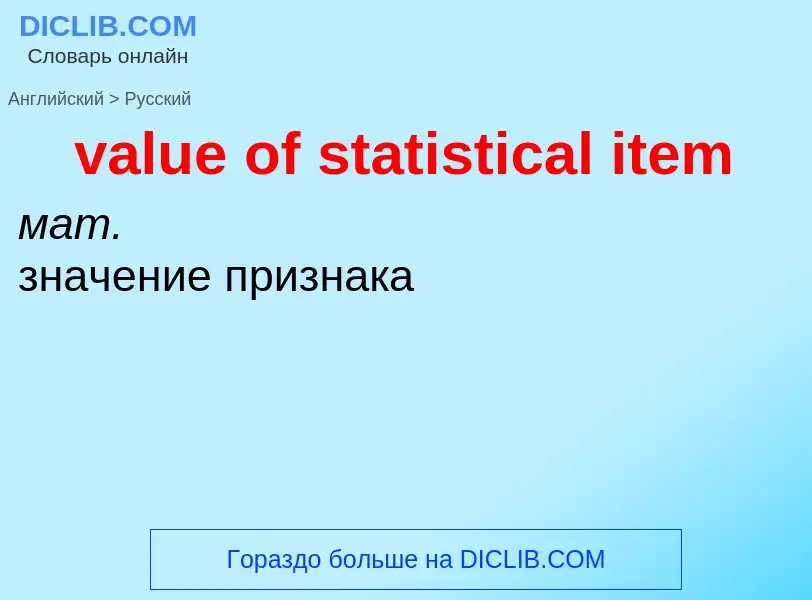Translation and analysis of words by ChatGPT artificial intelligence
On this page you can get a detailed analysis of a word or phrase, produced by the best artificial intelligence technology to date:
- how the word is used
- frequency of use
- it is used more often in oral or written speech
- word translation options
- usage examples (several phrases with translation)
- etymology
value of statistical item - translation to russian
значение признака
математика
закон распределения
Definition
.
Wikipedia
The value of life is an economic value used to quantify the benefit of avoiding a fatality. It is also referred to as the cost of life, value of preventing a fatality (VPF), implied cost of averting a fatality (ICAF), and value of a statistical life (VSL). In social and political sciences, it is the marginal cost of death prevention in a certain class of circumstances. In many studies the value also includes the quality of life, the expected life time remaining, as well as the earning potential of a given person especially for an after-the-fact payment in a wrongful death claim lawsuit.
As such, it is a statistical term, the cost of reducing the average number of deaths by one. It is an important issue in a wide range of disciplines including economics, health care, adoption, political economy, insurance, worker safety, environmental impact assessment, and globalization.
The motivation for placing a monetary value on life is to enable policy and regulatory analysts to allocate the limited supply of resources, infrastructure, labor, and tax revenue. Estimates for the value of a life are used to compare the life-saving and risk-reduction benefits of new policies, regulations, and projects against a variety of other factors.
Estimates for the statistical value of life are published and used in practice by various government agencies. In Western countries and other liberal democracies, estimates for the value of a statistical life typically range from US$1 million—US$10 million; for example, the United States FEMA estimated the value of a statistical life at US$7.5 million in 2020.


